2020 CNPS SCV Native Plant Lecture Series
 The CNPS SCV Native Plant Lecture Series was started during the pandemic in 2020. Talks in the series cover a wide range of native plant related topics -- conservation, rare plants, gardening, plant science, tours of botanical hot spots, and more. The talks were live presentations followed by Q&As with the viewing audience.
The CNPS SCV Native Plant Lecture Series was started during the pandemic in 2020. Talks in the series cover a wide range of native plant related topics -- conservation, rare plants, gardening, plant science, tours of botanical hot spots, and more. The talks were live presentations followed by Q&As with the viewing audience.
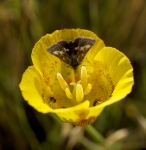 Project 467: Enhancing Native Plant Diversity at Edgewood, Stuart B. Weiss Ph.D.
Project 467: Enhancing Native Plant Diversity at Edgewood, Stuart B. Weiss Ph.D.
Wednesday, December 16, 2020
Watch on YouTube.
Edgewood Natural Preserve near Redwood City is famous for its flower-filled serpentine grasslands. But the 467 acres of Edgewood support great biodiversity in the chaparral, oak woodlands, and grasslands on more fertile soils. The 100+ acres of fertile grasslands are by far the most weed-invaded habitat, and have been the focus of successful control of “macroweeds.” Learn how the Friends of Edgewood and Creekside Science are pursuing the goal of decreasing “microweeds” and increasing native cover and diversity.
A Rapid Assessment Plot (RAP) inventory with over 80 plots documented more than 90 native species in the fertile grasslands, albeit often at low cover. They are investigating treatments to reduce annual weed seedlings just after germination, including hydromechanical pulverization (HMP) -- basically pressurewashing the grassland, and close-mowing with string cutters.
Besides commercially available local seeds, they are using more than 15 species of “boutique” seeds grown at Edgewood Farms and the Native Garden. They are trying to develop a long-term “indigenous” approach to restoration, whereby a beautiful, colorful diversity of native plants is established and can spread naturally given occasional management.
Stu Weiss, Ph.D. (Stanford University) is Chief Scientist of Creekside Science, which provides scientific and conservation expertise to diverse organizations as they cope with the rapidly changing 21st Century environment. He has researched the Bay checkerspot butterfly and serpentine grasslands since 1979, and has authored numerous scientific papers concerning climate/microclimate, population dynamics, nitrogen deposition, and conservation ecology. Creekside Science executes many hands-on restoration projects, including butterfly reintroductions, propagation of endangered plants, and habitat monitoring and management. His research and advocacy were instrumental in the development of the Santa Clara Valley Habitat Plan, and he is Science Advisor for the Bay Area Conservation Lands Network. For more information see www.creeksidescience.com
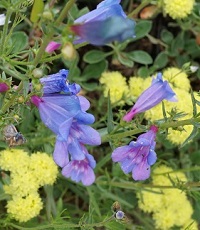 Native Plants for Year-Round Color, a talk by Madeline Morrow
Native Plants for Year-Round Color, a talk by Madeline Morrow
Thursday, December 3, 2020
Watch on Youtube
Learn how to select and group plants with varying bloom times so your garden is never without color. You’ll enjoy it and so will the bees, butterflies, and hummingbirds! See how to choose different plant forms and include beautiful bark, berry, and seed producing species for maximum interest all year long.
Madeline Morrow is a past President of our CNPS Chapter and current board member. A former computer programmer, she now volunteers in her community and works extensively on her native garden. Her garden was featured in Bay Nature magazine in March 2013; and she solved her drainage problem by installing a rain garden.
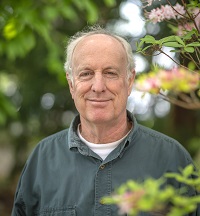 Nature’s Best Hope, A talk by Doug Tallamy
Nature’s Best Hope, A talk by Doug Tallamy
Saturday, November 14, 2020 5:00pm
Watch on Youtube
Recent headlines about global insect declines and three billion fewer birds in North America are a bleak reality check about how ineffective our current land management practices have been at sustaining the plants and animals that sustain us. Such losses are not an option if we wish to continue our current standard of living on Planet Earth. The good news is that none of this is inevitable. Doug Tallamy will discuss simple steps that each of us can and must ̶ take to reverse declining biodiversity and will explain why we, ourselves, are nature’s best hope.
Doug Tallamy is a professor in the Department of Entomology and Wildlife Ecology at the University of Delaware, where he has authored 103 research publications and has taught insect related courses for 40 years. Chief among his research goals is to better understand the many ways insects interact with plants and how such interactions determine the diversity of animal communities. His book Bringing Nature Home: How Native Plants Sustain Wildlife in Our Gardens was published by Timber Press in 2007 and was awarded the 2008 Silver Medal by the Garden Writers' Association. The Living Landscape, co-authored with Rick Darke, was published in 2014. Doug’s new book, Nature’s Best Hope, released by Timber Press in February 2020, is a New York Times Best Seller.
 Wildlife of the Bay Area, a talk by Ameet Zaveri
Wildlife of the Bay Area, a talk by Ameet Zaveri
October 26, 2020 7:30pm
Watch on Youtube
We call the Bay Area our home. How well do we know the wildlife that inhabit this space? Over 400 species of birds, charismatic cats like puma and bobcat, even non-felines like Western Tiger Swallowtail? Can you tell a rattlesnake from a non-venomous snake? Do you know there are *two* whale-watching seasons every year?
Learn about these and other fascinating aspects of wildlife in the Bay Area from naturalist and photographer Ameet Zaveri. An avid naturalist from a young age and a long-time Bay Area resident, Ameet is the founder of the informative website
sfbaywildlife.info. He will share pictures and information about when, where, and how to experience wildlife in the Bay Area, and answer your questions.
 CNPS Vegetation Program: Fine-scale inventory and mapping, a talk by Julie Evens
CNPS Vegetation Program: Fine-scale inventory and mapping, a talk by Julie Evens
Wednesday, October 21, 2020 7:30pm
Watch on Youtube
Julie Evens, the Vegetation Program Director of CNPS, will give an overview of CNPS's Vegetation Program and our broader collaborations on fine-scale vegetation classification and mapping in California to document our state’s incredible vegetation diversity. Julie helps maintain standard methods for surveying, classifying, and mapping vegetation in California and works with agencies, conservancies, and CNPS chapters on vegetation assessment projects, including current projects in the Greater Bay Area, Mojave and Sonoran Deserts, Sierra Nevada foothills, North Coast, Modoc Plateau, among other regions. She is a co-author with John Sawyer and Todd Keeler-Wolf of A Manual of California Vegetation, 2nd edition (http://vegetation.cnps.org), and she is a co-editor with Michael Barbour et al. of California’s Botanical Landscapes: A Pictorial View of the State’s Vegetation. She also helped compile the CNPS Fire Recovery Guide, 1st edition (available for download here: https://www.cnps.org/give/priority-initiatives/fire-recovery). Julie has a M.A. degree from Humboldt State University, and she has two B.A. degrees from the University of California–Santa Cruz.
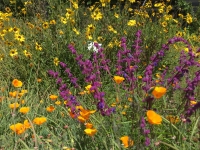 Planting Demo, Nursery Tour and QA session
Planting Demo, Nursery Tour and QA session
Saturday, October 10, 2020 10am
Watch on Youtube
There's a twist on our Going Native Garden Tour session in October -- rather than our usual garden visits, we'll be visiting the CNPS SCV and Grassroots Ecology Nurseries. Our 2020 fall plant sale is going to be online and will start immediately after the session (more information about the CNPS SCV plant sale at http://cnps-scv.org/2020-plant-sale, and Grassroots Ecology's at: https://www.grassrootsecology.org/online-plant-sales). Since you won't be able to come to the nursery to pick your plants out, we're doing our best to bring the nursery to you. This session includes a planting demonstration by Krzysztof Kozminski and tour of the nursery followed by a QA session with knowledgeable native plant gardeners from both nurseries so that you can ask for advice and get answers to questions about specific plants that will be available at their sales.
 CNPS Explorers: A Botanical Quest in Asia & Europe, by Ken and Dee Himes
CNPS Explorers: A Botanical Quest in Asia & Europe, by Ken and Dee Himes
September 24, 2020
Watch on Youtube
Join Ken and Dee Himes as they highlight their 2019 travels from May to November: a journey to Hong Kong, Borneo, Singapore, Penang, India and parts of Europe, on a botanical quest to compare flora and geological features with those of California. The main botanical focus of the trip was in Munsyari, the southern side of the Himalaya in the state of Uttarakhand, India. They will share some of their experiences from a once-in-a-lifetime trek in the Himalaya with three other Chapter members: Arvind Kumar, Ashok Jethanandani, and Joe Cernac. See a surprising geological feature in Hong Kong; orangutans in Borneo; amazing flora in the Himalayas; and other botanical interests in the other countries visited. Of course there will be some interesting insect and bug photos as well.
Ken and Dee Himes have been Chapter members since 1974 (Ken) and 2007 (Dee). Ken is a CNPS Fellow who has held nearly every Chapter position, in addition to leading long-term habitat restoration efforts at Edgewood. Since joining CNPS, Dee has been our Chapter treasurer, field trip chair and board member, a member of the CNPS State Board; and has inspired many with her exceptional photography skills. Ken and Dee were married in 2016, and have continued to celebrate by enjoying interesting plants and habitats wherever they travel.
GNGT: Matadero Garden and Bol Park
September 15, 2020
Watch on Youtube
View two fabulous native plant gardens in Palo Alto with talks and Q&A sessions by their owners and designers. This is a terrific opportunity to get ideas for your own garden and receive advice from experienced gardeners and designers.
Matadero Garden, http://gngt.org/MataderoOaks_GNGT, Melanie Cross & Stephanie Morris
Bol Park Native Garden, http://gngt.org/BolPark_GNGT, Melanie Cross & Claire Elliott
GNGT: Hernandez Backyard & Butterfly House Native Garden
September 2, 2020
Watch on Youtube
Going Native Garden Tour (GNGT - http://gngt.org) - virtual visits to two of the garden on the tour.
Hernandez Backyard in San Jose, http://gngt.org/Hernandez_GNGT
Carrie Levin, Butterfly House Native Garden in Sunnyvale, http://gngt.org/ButterflyHouse_GNGT
 Plant ID for the Curious, a talk by Bruce Homer-Smith
Plant ID for the Curious, a talk by Bruce Homer-Smith
Thursday, August 27, 2020
Watch on Youtube
PlantID.net is a website for people who see a plant in the wild and wonder about it. You enter what you know about your plant (where you are, plant type, color, leaf arrangement, deciduous, has berries, etc.) to get a short illustrated list of possibilities. Then you dive down into photos and captions to learn about your plant.
Bruce is a retired database developer. He loves to learn about plants in the wild because it helps him notice more when he’s out. Since 2012 he’s spent about half of his time programming and adding content to PlantID.net – a labor of love. He works with a large community of plant enthusiasts, adding ID tips and stories to make PlantID.net an extraordinary place to learn about California plants.
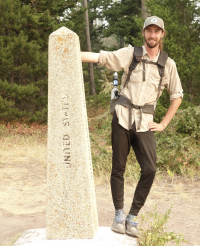 Death Valley ̶ Botanizing High and Low, a talk by Matt Berger
Death Valley ̶ Botanizing High and Low, a talk by Matt Berger
Thursday, July 16, 2020
Watch on Youtube
Matt Berger has hiked from the lowest to the highest points of Death Valley National Park, observing and recording flora throughout its diverse environments. Matt provides an overview of the biogeography and microhabitats of the park, and shares his photos of the limestone endemics and other rare plants. Hear a few of his secrets to finding rare plants in the desert and mountains.
Matt is preceded by the recipient of the CNPS SCV 2019 Graduate Research Scholarship, Lacey Benson from San Jose State University. She describes her research doing a morphometric analysis comparing western sword fern (Polystichum munitum) pinnae size across the coast redwood ecological gradient. Analysis of pinnae morphology will be compared to climate data and will aid in understanding how the longevity of this fern may be affected by climate change.
Matt Berger received his BS in horticulture and and his MS in plant pathology at West Virginia University. Matt is a passionate backpacker having thru hiked the Appalachian Trail, Pacific Crest Trail twice, Continental Divide Trail, Arizona Trail and other long distance trails for a total of over 11,000 miles in the last 8 years. Matt is an accomplished photographer of the plants, fungi and animals that he encounters on his adventures. You can find his photos on Instagram at @sheriff_woody_pct and on YouTube at sheriff_woody_pct.
2021 CNPS SCV Native Plant Lecture Series Archive

The CNPS SCV Native Plant Lecture Series was started during the pandemic in 2020. It covers a wide range of native plant related topics -- conservation, rare plants, gardening, plant science, tours of botanical hot spots, and more. The talks were live presentations followed by Q&As with the viewing audience.
View past talks on our YouTube channel: https://www.youtube.com/c/CNPSSantaClaraValley
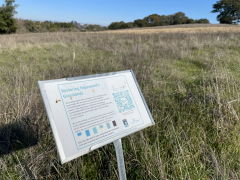
Project 467 Update: Enhancing Native Plant Diversity at Edgewood, Stuart B. Weiss Ph.D.
December 8, 2021
Edgewood Natural Preserve near Redwood City is famous for its flower-filled serpentine grasslands. But the 467 acres of Edgewood support great biodiversity in the chaparral, oak woodlands, and grasslands on more fertile soils. The 100+ acres of fertile grasslands are by far the most weed-invaded habitat, and have been the focus of successful control of “macroweeds.” Learn how the Friends of Edgewood and Creekside Science are pursuing the goal of decreasing “microweeds” and increasing native cover and diversity.
A Rapid Assessment Plot (RAP) inventory with over 80 plots documented more than 90 native species in the fertile grasslands, albeit often at low cover. They are investigating treatments to reduce annual weed seedlings just after germination, including hydromechanical pulverization (HMP) -- basically pressure washing the grassland, and close-mowing with string cutters.
Besides commercially available local seeds, they are using more than 15 species of “boutique” seeds grown at Edgewood Farms and the Native Garden. They are trying to develop a long-term “indigenous” approach to restoration, whereby a beautiful, colorful diversity of native plants is established and can spread naturally given occasional management.
Dr Weiss will be presenting the exciting first year results and the second year scaling up. Stu Weiss, Ph.D. (Stanford University) is Chief Scientist of Creekside Science, which provides scientific and conservation expertise to diverse organizations as they cope with the rapidly changing 21st Century environment. He has researched the Bay checkerspot butterfly and serpentine grasslands since 1979, and has authored numerous scientific papers concerning climate/microclimate, population dynamics, nitrogen deposition, and conservation ecology. Creekside Science executes many hands-on restoration projects, including butterfly reintroductions, propagation of endangered plants, and habitat monitoring and management. His research and advocacy were instrumental in the development of the Santa Clara Valley Habitat Plan, and he is Science Advisor for the Bay Area Conservation Lands Network. For more information see
www.creeksidescience.com.
This talk will be live streamed on Zoom (requires advance registration) and YouTube (registration NOT required).
Wednesday, November 17, 2021, 7:30pm

California’s Oaks and Their Countless Relations, a talk by Kate Marianchild
California’s magnificent oaks support more life forms than any plant species in the state. In a presentation filled with wildlife ̶ from spiders and lizards to woodpeckers, woodrats, and bears - author and naturalist Kate Marianchild will discuss the vital role oaks play in food webs. We’ll learn about co-evolutionary connections between oaks and caterpillars, jays, and lichens, and we’ll marvel at the tiny wasps who bend enormous oaks to their bidding. As Kate shares stories of oak woodland species, we’ll fight with woodpeckers for mating opportunities, crawl through woodrat houses looking for rattlesnakes, and plummet to the ground with squirrels as they use their tails as both parachutes and landing pads. Before the talk, try to collect an acorn with its cap from at least two kinds of oak. If you can, also spend some time watching birds, lizards, squirrels or other animals in or around oaks. (Please collect your acorns only from places where you have permission to collect.) This talk is geared especially for middle school and high schoolers; adults will find it engaging as well.
Kate Marianchild is the author of the award winning bestseller Secrets of the Oak Woodlands: Plants and Animals among California’s Oaks (Heyday, 2014). With humor, affection, and scientific accuracy, Kate profiles the behaviors, social structures, and interrelationships of twenty-two species found in California’s oak woodlands.Kate lives in a yurt near Ukiah surrounded by six kinds of oak and abundant wildlife. Go to www.katemarianchild.com to purchase a signed copy of her book, close-focus binoculars, and/or oak identification
This talk will be live streamed on Zoom (requires advance registration) and YouTube (registration NOT required).
Recent Talks
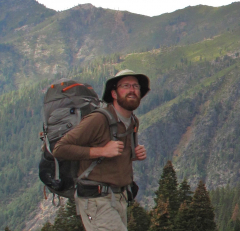
Botanizing the Bigfoot Trail, a talk by Michael Kauffmann
November 6, 2021
Watch on YouTube
Did you know that the Klamath Mountains of northwest California and southwest Oregon are one of the most biodiverse temperate mountain ranges on Earth? In fact, 32 species of conifers and over 3,500 taxa of plants call this area home! The Bigfoot Trail traverses this amazing mountain range and celebrates the region’s plant diversity. Join educator, ecologist, and author Michael Kauffmann, who first hiked the Bigfoot Trail in 2009, for a virtual 360- mile hiking tour. He will highlight the conifer diversity as well as some of the exceptional flowering plants that call this region home, with spectacular pictures and intriguing stories.
Michael Kauffmann is a kindergarten through college educator in Humboldt County where he lives with his wife and two young boys. He has served as an ecologist with the CNPS Vegetation Program mapping rare conifers including whitebark pine, yellow-cedar, Pacific silver fir, and bigcone Douglas-fir. He is also the author of Conifer County, Conifers of the Pacific Slope, and Field Guide to Manzanitas.
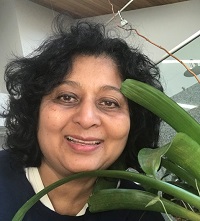
Water Resilience in the Garden, a talk by Radhika Thekkath
October 20, 2021
View this talk on YouTube.
As the climate swings unpredictably year to year, causing early spring floods and summer drought in the Western United States, it makes sense to understand and implement established ways to manage the rainfall on our properties. Whether we live on a small suburban lot or run a small farm on multiple acres, these techniques allow us to be resilient in the face of uncertain rainfall. We can thus begin a process of building predictability into our summer gardens, regardless of whether we have a native pollinator garden, grow fruits and vegetables, or do both. This talk will focus on techniques such as rainwater collection systems, as well as ways to slow and stop the flow of water on our ground so that our soil is better saturated when it does rain. It is possible to actively compensate for a lower rainfall in the winter so that it has a smaller impact on our summer gardens.
Radhika Thekkath is a retired computer scientist and active member of our Chapter who has been gardening with native plants for over ten years. She recently returned to California after a three-year stay in Washington state. Her more recent work includes active forestry management and stewardship as well as sustainable building with cob and straw bale. She is a certified permaculture designer.

Maintaining Your Late Summer / Fall Native Plant Garden, a Panel Talk
October 6, 2021
View this talk on YouTube.
Late summer and fall are a time of rest for most native plant gardens. As we hope for rain, it is the time to tidy the garden and prune in preparation for cooler temperatures. Stephanie Morris, Lior Dahan, Patricia Evans and Madeline Morrow will share their garden maintenance routines. Bring your questions and any ideas you may want to share with others during a group discussion.
Stephanie Morris is a landscape architect with a focus on native plant designs that respond to aesthetics, functionality and ecology. Lior Dahan has a degree in environmental horticulture and owns Rhythmic Gardening, an ecological garden maintenance company with a focus on working with nature to heal soil, grow healthy plants and appreciate the wildlife in our gardens. Patricia Evans, owner of Natural Landscape Design, specializes in native plants and sustainable landscaping. Madeline Morrow is a past President of our CNPS Chapter and current board member. Her garden was featured in Bay Nature magazine in March 2013 and has been on the Growing Natives Garden Tour for many years.
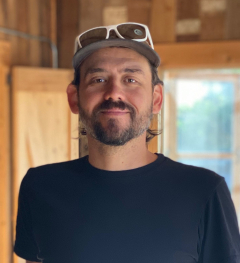
The Distinctive Landscape of Blue Oak Ranch Reserve, a talk by Zac Harlow
September 15, 2021
View this talk on YouTube.
UC Berkeley’s Blue Oak Ranch Reserve is a nature reserve and biological field station located in one of California’s iconic landscapes: the oak savannah and woodlands of the Diablo Range. In this talk, Zac Harlow will discuss some of the flora and natural history that makes this region special; the interesting research, field courses and groups that utilize the reserve; and some of the challenges of managing for biodiversity in a changing climate. About half of the 3,280 acres of the reserve were burned in the 2020 SCU Lightning Complex fire and Zac will discuss these impacts as well as the surprising resiliency of this special landscape.UC Berkeley’s Blue Oak Ranch Reserve is a nature reserve and biological field station located in one of California’s iconic landscapes: the oak savannah and woodlands of the Diablo Range. In this talk, Zac Harlow will discuss some of the flora and natural history that makes this region special; the interesting research, field courses and groups that utilize the reserve; and some of the challenges of managing for biodiversity in a changing climate. About half of the 3,280 acres of the reserve were burned in the 2020 SCU Lightning Complex fire and Zac will discuss these impacts as well as the surprising resiliency of this special landscape.
Zac Harlow is committed to the idea that field stations can bring communities and nature together in meaningful and important ways. He is the resident director of Blue Oak Ranch Reserve and has worked to grow and diversify the user base over the last five years. His love of field stations runs deep. He lived on a station in Grand Teton National Park for many summers during his teens and twenties and is familiar with many more. Since moving to California in 2007, he has worked for the San Diego Zoo’s Wildlife Alliance, received his Ph.D. from UCLA and taught classes at Cal State LA and Cal State East Bay.

San Mateo Habitat Garden with Rainwater Collection and Storage, a Talk by Elaine Salinger
September 8, 2021
View this talk on YouTube.
Elaine Salinger’s yard has been transformed from ivy and non-natives to an almost 100% native habitat garden over the last twenty years. She will illustrate how she and her husband have done this while incorporating the following principle: what happens in the garden, stays in the garden. She’ll cover how to use everything you prune as mulch and how to use larger tree branches to build paths and trails; how to collect rainwater and groundwater, store it, and use it in the garden; and the benefits of using rock mulch and garden trimmings as mulch, rather than purchasing bark mulch. Elaine will highlight some of her favorite plants on the upper, landscaped yard including fifteen of the manzanitas, the frog pond and the riparian area surrounding the pond.
The property adjoins serpentine open space, and Elaine will show the transformation of the lower hillside, where she has removed the non-native invasive plants, allowing the local natives to propagate. Elaine and her husband are also dog lovers, and Elaine will briefly offer tips about how to have a dog friendly native yard.
Elaine Salinger is a retired veterinarian who lives in San Mateo. She is passionate about native plants, animals, climate change action, political engagement and making the most of every day. The quote that best describes her comes from E.B. White, “I get up every morning determined to both change the world and have one hell of a good time. Sometimes this makes planning my day difficult.”
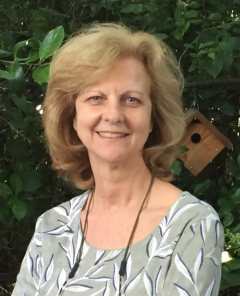 How to Attract Wild Birds to your Garden a talk by Lisa Myers
How to Attract Wild Birds to your Garden a talk by Lisa Myers
September 1, 2021
View this talk on YouTube.
Birds have evolved to live in specific habitats and eat specific food items, from seeds and nectar to bugs and mammals. We will talk about what people can do to attract more birds to their gardens and how to provide the ideal environment for their wild birds to thrive. A native plant garden is exactly what native birds would prefer. Lisa will talk about the different bird species that are most commonly found in our neighborhoods, the time of year we can expect them and what resources are available to help you identify your birds.
Lisa Myers took her passion for bird watching and created her business “Let’s Go Birding,” where for decades she has led bird tours and taught birding classes throughout the Bay Area and beyond. She also owns the Los Gatos Birdwatcher where she and her staff answer customer questions about the birds in their gardens and how best to attract them
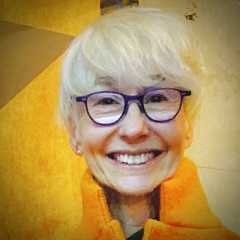 Climate Change: What Works and What You Can Do, a talk by Elaine Salinger
Climate Change: What Works and What You Can Do, a talk by Elaine Salinger
August 25, 2021
View this talk on YouTube.
What is the most effective solution to climate change? Why is it the most effective solution? How can the US enact this solution in a way that encourages the rest of the world to do the same? Is this a real possibility within the next eight months? And what can you do in less than two minutes a day to help? Although you can participate on your phone, the video is an important part of the presentation.
Elaine Salinger is a retired veterinarian living in San Mateo. She has been growing native plants for 15 years and has hosted many native plant garden tours. She has been interested in climate change action for 25 years, and has been an active member of Citizens Climate Lobby for 6 years. Over the last 3 years, she has been mentoring high school students and giving presentations on climate change action. As the problem becomes more urgent, she is doing more outreach, volunteering over 40 hours/week, and offering zoom meetings on climate change solutions and action several times a week.
 Paintbrushes in Peril: Rare Castilleja Species of North America, a talk by Mark Egger
Paintbrushes in Peril: Rare Castilleja Species of North America, a talk by Mark Egger
August 18, 2021
View this talk on YouTube.
Of the approximately 200 species of the genus Castilleja, many are common, widespread and often conspicuous components of our native flora. However, there are also many species in the genus that are rare and declining due to a variety of causes, as well as many others that are extremely range-limited due to their stringent habitat requirements. Many of these species are seriously threatened with extinction from a variety of mostly human-caused factors, including global warming and resultant climate changes. Fortunately, there are also some remarkable success stories, including the strong recovery of several species that were nearly extinct but recovered once the sources of their decline were eliminated. The program will include photos from Mark’s 37 years of field work studying paintbrushes and their relatives.
Mark Egger is a retired science educator, a research associate at the WTU Herbarium in Seattle (Washington Territory University), and a member of CNPS, WNPS (Washington Native Plant Society), and NPSO (Native Plant Society of Oregon). He has published numerous papers and flora treatments for the genus Castilleja, including a number of new species and varieties, and he is the lead author for Castilleja in the recently-published Vol. 17 of the Flora of North America. He also maintains a Flickr site with over 56,000 images of his botanical photos collected from travels over the last 37 years, centered around Castilleja and related genera.
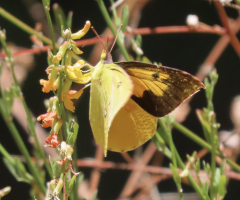 Gardening for Butterflies and Caterpillars, a talk by Susan Karasoff
Gardening for Butterflies and Caterpillars, a talk by Susan Karasoff
August 11, 2021
View this talk on YouTube.
Professor Doug Tallamy and his students demonstrated that caterpillars and the native plants with which the caterpillars co-evolved are the base of our food web. Our local butterflies are charismatic examples of insects with a caterpillar phase. We’ll discuss who our local butterflies are and how we can use their local native plants to enhance our gardens.
Susan Karasoff gardens in San Francisco’s clay soil. Susan is a member of the California Native Plant Society - Yerba Buena (San Francisco) chapter. She brings an an “only the easiest plants survive” approach to gardening. Susan grows a buffet of colorful native edible and pollinator plants, specifically gardening to feed caterpillars, bees, hummingbirds and people.
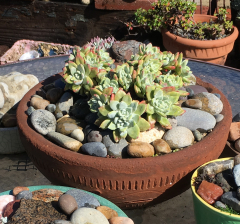 Container Gardening with Native Plants, a talk by Pete Veilleux
Container Gardening with Native Plants, a talk by Pete Veilleux
August 4, 2021
View this talk on YouTube.
Dress up the smallest of spaces using native plants in containers. Containers allow you to provide exactly the right soil, sun, and drainage conditions for those picky natives that you’ve always wanted to grow. See how creative you can be recycling pots and combining different textures and color for an ever-changing garden display.
Pete Veilleux is a master designer, nurseryman, and photographer. He creates gardens using native plants for long-lasting landscapes that help people get the maximum use and pleasure from their patch of earth. He is the owner and propagator of East Bay Wilds Native Plant Nursery (eastbaywilds.com) in Oakland, and a tireless advocate of native gardening.
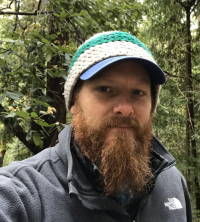 Conservation of a Rare Redwood Forest Endemic, Dudley's Lousewort, a talk by Ben Carter
Conservation of a Rare Redwood Forest Endemic, Dudley's Lousewort, a talk by Ben Carter
Wednesday, July 21, 2021
View this talk on YouTube.
Dudley's Lousewort (Pedicularis dudleyi, Orobanchaceae) is a rare redwood forest endemic known only from two widely separated populations in San Mateo and Monterey counties. In this talk, we'll discuss ongoing efforts to understand the pollination, seed dispersal and other important life-history characteristics as well as providing an overview of surprising genetic results that provide insight into the evolutionary history of the species.
Ben Carter is an Associate Professor of Biology and the Director of the Carl W. Sharsmith Herbarium at San Jose State University. His current research focuses on biogeography of bryophytes (mosses, liverworts & hornworts), conservation of rare plants and studies in the evolution and ecology of flower color.
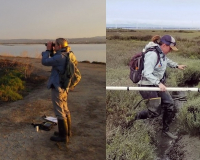 Protecting San Francisco Bay from Invasive Spartina, a talk by Jeanne Hammond and Lindsay Faye Domecus
Protecting San Francisco Bay from Invasive Spartina, a talk by Jeanne Hammond and Lindsay Faye Domecus
Wednesday, July 14, 2021
View this talk on YouTube.
San Francisco Bay is more than the geographic feature that defines our region. It is home to hundreds of types of fish, birds, and other wildlife. It provides food (it once provided a lot more). It’s an aquatic mood stone that goes from slate grey on a cloudy day to sparkling emerald and sapphire on a sunny day. (And, yes, it smells kind of bad sometimes, too.) Unknown by many, it the largest estuary on the west coast of North America, in a league with Chesapeake Bay on the east coast and the Mississippi Delta on the gulf coast. Whether riding on a bike or watching birds or having a BBQ, we are fortunate to have this amazing place in our backyard. And we’re not the only ones: millions of birds use the Bay as a critical stopover point when the migrate along the Pacific Flyway each year. They get food and shelter from the saltmarshes and tidal mudflats. But these places are under threat, not just from sea level rise but also from invasive plants. Back in the last century, well-meaning engineers planted Atlantic cordgrass for erosion control. Then it began to spread and damage marshes. Since 2005, the Coastal Conservancy’s Invasive Spartina Project has used airboats, genetic testing, sophisticated GIS, and a lot of hard work to push back the invasive cordgrass. Learn about how hometown heroes are doing their part to address the global biodiversity crisis.
This talk will be given by Jeanne Hammond, ISP Restoration Program Manager with the Invasive Spartina Project and Lindsay Faye Domecus, Environmental Biologist.
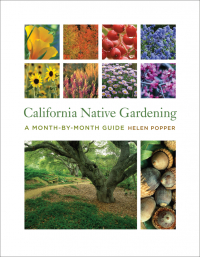 California Native Gardening—Month by Month, a talk by Helen Popper
California Native Gardening—Month by Month, a talk by Helen Popper
Wednesday, July 7, 2021
View this talk on YouTube.
A year in the California garden is different from a year gardening anywhere else. In this talk, Helen Popper will explain the keys to California’s garden rhythms and discuss approaches to maintaining your native garden.
Helen Popper is the author of California Native Gardening, A Month-by-Month Guide. She has been honored as one of the ten best garden authors of California by Live Outside. Having collected the insights of dozens of dedicated professional and amateur native gardeners, she’s delighted to pass them along.
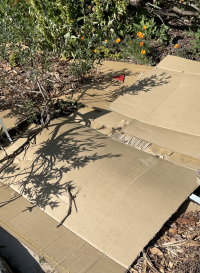 Converting Your Lawn with Sheet Mulching, a talk by Radhika Thekkath
Converting Your Lawn with Sheet Mulching, a talk by Radhika Thekkath
Wednesday, June 30, 2021
View this talk on YouTube.
This sheet mulching handout describes the process discussed in the talk.
Do you have a traditional lawn that you would like to convert to a native garden with habitat value and long-term drought resilience? Come learn a simple technique that you can immediately put into practice and start planting your native plant garden this Fall. Radhika's lawn area was sheet mulched years ago and is now a thriving native pollinator meadow giving joy to birds, bees, butterflies and the family.
Radhika Thekkath is a retired computer scientist who has been gardening with native plants and has been an active member of our Chapter for over ten years. She recently returned to California after a three year stay in Washington state. Her more recent work includes active forestry management and stewardship as well as sustainable building with cob and straw bale. She is a certified permaculture designer.
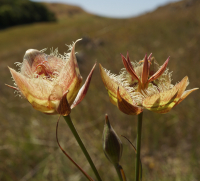 Bay Area Rare Plants – A nine-county photo tour, a talk by David Greenberger
Bay Area Rare Plants – A nine-county photo tour, a talk by David Greenberger
Wednesday, June 16, 2021
View this talk on YouTube.
This talk takes viewers on a whirlwind trip around the Bay, presenting photography and commentary on rare species ranging from the iconic to the very obscure. The nine counties that touch San Francisco Bay will each have time in the spotlight, with several plants featured for each.
David Greenberger is fortunate to work as a botanist and conservationist on Mt. Tamalpais, a small coastal peak in Marin County whose watersheds cradle a flora of over 1,000 species. He’s spent the last six+ years with the Golden Gate National Parks Conservancy and has also done stints with the Marin Municipal Water District and Point Blue Conservation Science. He serves as Rare Plant Chair for CNPS Marin Chapter. His plant expertise centers in the San Francisco Bay Area, but he’s obsessed with biodiversity, novelty, and rarity across the state and beyond.
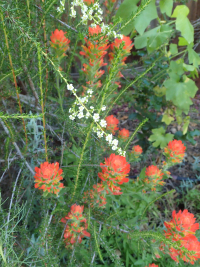 Rosewood Medicinal Native Garden, a talk by Radhika Thekkath
Rosewood Medicinal Native Garden, a talk by Radhika Thekkath
Wednesday, June 9, 2021
View this talk on YouTube.
This talk will feature an in-depth visit to the Rosewood Medicinal Native Garden, one of the gardens on the 2021 Going Native Garden Tour. Come on a tour to a suburban garden stocked with native plants valued for their medicinal value. The Rosewood Palo Alto garden is about 12 years old, converted from non-native grass to native plant areas. The garden features a pond with waterfall and bathing area for birds and wildlife, a native pollinator meadow, edible fruits, and a compost area. The tour will be followed by a question and answer session with the garden owner. This talk is part of the 2021 Going Native Garden Tour, which started in April, and is providing virtual tours throughout the year. Register for the tour at gngt.org to receive updates on upcoming tour activities.
Radhika Thekkath is a retired computer scientist who has been gardening with native plants and has been an active member of our Chapter for over ten years. She recently returned to California after a three year stay in Washington state. Her more recent work includes active forestry management and stewardship as well as sustainable building with cob and straw bale. She is a certified permaculture designer.
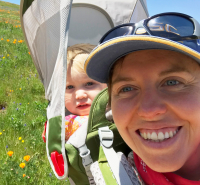 Fire Resilient Landscaping with Native Plants, a talk by Nikki Hanson
Fire Resilient Landscaping with Native Plants, a talk by Nikki Hanson
Wednesday, June 2, 2021
View this talk on YouTube.
With increasing drought and fire risk, gardening and land management in the wildland urban interface (WUI) can seem daunting. In this talk, Nikki will address six elements of firesafe landscaping to consider when trying to tackle this hot topic: where to plant, what to plant, spacing between plants, break up continuity in the garden, maintenance, irrigation. We will have lots of time for questions as we break down the pieces to creating a landscape that is beautiful, resilient, and habitat friendly.
Nikki Hansen brings a breadth of experience to her landscaping and land management approach. With 17 years working in native plant nurseries, and a dozen years working as an educator in various capacities, she hopes to help home gardeners and rural residents be more equipped to foster a fire resilient landscape. Prior to starting her new business, California Sisters Landscapes, she had a variety of roles at the local non-profit Grassroots Ecology, including Environmental Educator and Nursery Manager. Nikki has an B.S. in Ecology and Evolutionary Biology from UC Santa Cruz. She has experience in plant science, including her own graduate research on native milkweed production at the University of Idaho.
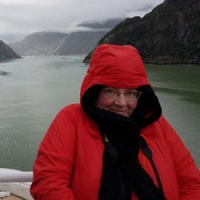 Wildflowers of the Bay Area, a talk by Andrea Williams
Wildflowers of the Bay Area, a talk by Andrea Williams
Wednesday, May 19, 2021
View this talk on YouTube.
Wildflower season in the Bay Area is upon us, but even seasoned hikers and naturalists can get confused by the diversity of beautiful flowers we have in our area. To help you progress in your native wildflower knowledge, Andrea Williams, CNPS’ Director of Biodiversity Initiatives, will provide an overview of the most common wildflowers in our area during this webinar. She’ll go over how to identify these flowers and share interesting natural history details about each. We’ll also share about some of the community science work CNPS is leading to protect our state’s amazing plant biodiversity.
Andrea Williams has two decades of experience in science-based public lands management: monitoring rare plants and plant communities, carrying out project compliance surveys, mapping and removing invasive plants and responding to landscape-level threats. She has worked in partnership to design indicators, metrics, status and trends for land health; lead volunteers in botanical inventories; improve the quality and quantity of data submitted to California Natural Diversity Database (CNDDB); and teach plant identification, field methods and invasive plant management planning.
This talk will be live streamed on YouTube.
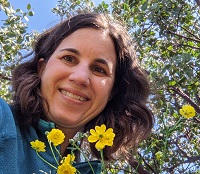 From Trails to Gardens: Celebrating Local Native Plants, a talk by Stephanie Morris
From Trails to Gardens: Celebrating Local Native Plants, a talk by Stephanie Morris
Wednesday, May 5, 2021
View this talk on YouTube.
For many of us, hiking has activated an interest in gardening with California native plants. This talk explores many of our locally native plants in Santa Clara Valley through hiking photos and compares native plants in our wildlands with their counterparts in gardens. What unusual plants are growing closer to us than we think and where can we see them? What do we learn about how to grow natives from seeing them in their natural setting? Do plants look different or respond in unexpected ways when grown under garden conditions? A plant list of California natives seen on local trails that also thrive when grown in gardens will be shared, along with many inspirational home garden and wildland trail photos.
Stephanie Morris has been working in the field of Landscape Architecture for 25 years. She enjoys creating designs that respond to aesthetics, functionality, and ecology ̶ with emphasis on California native plants, healthy soil, water-conservation, and environmentally-conscious materials.
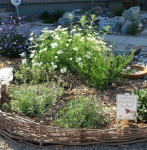 The Penney Garden: A Transformation Story, a talk by Janine Penney
The Penney Garden: A Transformation Story, a talk by Janine Penney
Wednesday, May 12, 2021
View this talk on YouTube.
Many years ago, the Penneys stopped watering their lawn and caring for the soil. Most of the established non-native plants did well on only rainwater, but the rest of the yard became compacted and overgrown with Bermuda grass. This talk is part of the 2021 Going Native Garden Tour, which is providing virtual tours throughout the year. Register for the tour at gngt.org to get updates on upcoming tour activities. View this garden's tour site at https://gngt.org/Penney_GNGT
Janine Penney will walk us through the one-year process that has transformed the compacted dirt yard to a young native garden. She designed the garden with wildlife in mind, with foundation plants that mature to different levels to provide food, shelter and nesting areas. Visitors can’t help but notice the two raised vegetable beds among the native plants, which provide vegetables and edible (non-native) flowers. There is also a small pond with native bog plants.
Janine Penney has over 20 years of experience in K-12 education and amateur gardening. She became obsessed with California native gardening over the last few years.
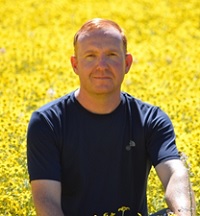 Flora of the San Joaquin Desert, a talk by Ryan O’Dell
Flora of the San Joaquin Desert, a talk by Ryan O’Dell
Wednesday, April 21, 2021, 7:30pm
View this talk on YouTube.
Located in the southern Central Valley, the San Joaquin Desert is the smallest, least recognized and most imperiled true desert in North America, with less than 40% of its original area remaining. The desert was not formally described until 1995 and didn’t gain recognition by the scientific community until 2011. The San Joaquin Desert is floristically distinct with 37 near-endemic and 40 strictendemic plant species. Nearly half of the species are imperiled and listed as endangered, threatened, rare or watch status. This presentation will delve into why it took so long for the San Joaquin to be recognized as a desert, how it is both climatically and floristically similar to the Mojave Desert and what we can do to conserve what little of it remains.
Ryan O’Dell has been a Natural Resource Specialist with the BLM Central Coast Field Office for 14 years. His primary duties include rare plant survey and endangered plant species monitoring and recovery in the central Inner South Coast Ranges and San Joaquin Desert.
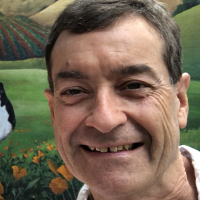 Gardening for Native Bees, a talk by John Kehoe
Gardening for Native Bees, a talk by John Kehoe
Wednesday, April 14, 2021, 7:30pm
View this talk on YouTube.
We all know about the European honeybee, but what about the native bees that live here in Santa Clara Valley? These local insects help pollinate our ornamental and edible plants, too! Once you know what to look for, you’ll learn to recognize over a dozen bee species that live in our urban setting ̶ especially among locally-growing native plants. Find out how planting even a few select natives can enrich your garden and attract even more bees.
John Kehoe is a longtime member of CNPS as well as the Xerces Society. He is passionate about the natural world and is a lead volunteer as well as a board member of the nonprofit Ulistac Natural Area Restoration and Education Project (UNAREP). He is also a regular volunteer at various CNPS functions. His research interests include studying native bees and their relationships with native plants. He shares these interests by way of his photography on Flickr, CalPhotos, Bumble Bee Watch, and on his YouTube channel, He frequently posts on iNaturalist, especially on the California Pollination Project.
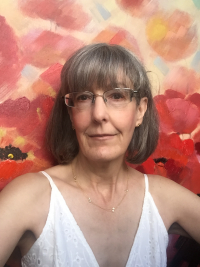 Native Plant Pollinators, a talk by Juanita Salisbury
Native Plant Pollinators, a talk by Juanita Salisbury
Wednesday, April 7, 2021, 7:30pm
View this talk on YouTube.
Join Landscape Architect Juanita Salisbury to learn fascinating details about native plant pollinators. Juanita will share details about specific pollinator relationships with California native plants and methods for attracting more pollinators to your garden. She will also share information about several public California native pollinator gardens she has spearheaded in Palo Alto. The focus for designing a habitat is productivity and resiliency and methods to achieve both will be discussed. “Form follows function” in the most general sense, is one of the guiding principles for a resilient habitat. Best practices for optimizing the functions of various plants and other habitat items will be discussed, as well as how to avoid creating an ecological trap. These methods are easily implemented and flexible so that they can be shared and built upon.
Juanita Salisbury, Ph.D., is a licensed landscape architect who grew up in exploring wild spaces in California and Oregon. She started gardening at around age thirteen and has been inspired by the beauty of gardens and nature ever since. With degrees in psychology, biopsychology, and landscape architecture, Juanita has established her own design firm focused on ecologically friendly, drought-tolerant planting.
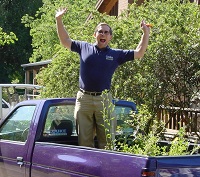 Meadowlands Garden Tour, a talk by Krzysztof Kozminski
Meadowlands Garden Tour, a talk by Krzysztof Kozminski
Wednesday, March 31, 2021, 7:30pm
View this talk on YouTube.
Meadowlands, a private residential garden in San Jose, has been cultivated for over 20 years, starting from a lifeless patch of subsoil, stripped bare during the house construction in 1996. Initially it was planted as a mix of native and exotic drought-tolerant plants. From about the year 2000 onwards, only native plants were added. Currently, the garden is at least 95% California native, and boasts a collection of over 300 species and cultivars of California natives. The main feature of the garden is a large collection of California lilacs (ceanothus), with over 60 different species and cultivars, most of them having grown to mature size. Ceanothus seedlings have volunteered in the garden in recent years; most of them are unique hybrids and about 50 of these have reached flowering stage. The wide variety of native plans and large brush piles attract numerous wildlife. Visitors include jackrabbits, skunks, lizards, frogs, toads, snakes and many birds and insects. Several years ago, a covey of California quail made its home in the thickets of big saltbush (Atriplex lentiformis) and other low-growing shrubs. The garden is frequently on the Going Native Garden Tour (gngt.org/Meadowlands_GNGT).
Krzysztof Kozminski, aka KK, is a software engineer by profession (Ph.D. in electrical engineering, 1985). His hobbies are collecting and photographing plants and growing clay-tolerant native California species in his garden in San Jose. He is an active member and co-founder of the Going Native Garden Tour Steering Committee and created and maintains the Tour’s website. Krzys was the recipient of our Chapter’s 2020 Outstanding Volunteer Award.
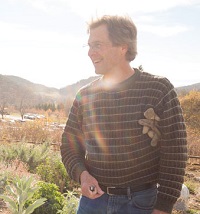 Saving Wildflowers: How to be a More Effective Rare Plant Advocate, a talk by Dr. Tim Krantz
Saving Wildflowers: How to be a More Effective Rare Plant Advocate, a talk by Dr. Tim Krantz
Wednesday, March 17, 2021, 7:30pm
View this talk on YouTube.
This talk is cosponsored by the East Bay Chapter and our Chapter of CNPS. Rare plants are like canaries in coal mines: they are indicator species of environmental impacts to their respective ecosystems, which, if ignored or left unattended, could result in the destruction of those unique habitats. Each one has its own story of endangerment: from the Presidio manzanita, with only one naturally occurring specimen in the wild but reproduced from cuttings in the native nursery trade; to the Cushenbury buckwheat, restricted to limestone soils and threatened by mining; to the slender-horned spineflower, once common on alluvial fans in Southern California and now extremely endangered by sand and gravel mining and urban development. And they need your help! From more than 40 years of environmental impact assessment experience, Dr. Krantz will share some tricks of the rare plant protection trade, including a citizen’s guide to the California Environmental Quality Act and Federal and State Endangered Species Acts, as they pertain to rare plant conservation. Anyone can adopt a local rarity, become familiar with its natural history and testify before a local agency as an “expert witness” on the rare plant’s behalf. You too can become a “Wildflower Warrior!”
Dr. Tim Krantz’s day job is Professor and Chair of the Environmental Studies Department at the University of Redland. At his “moonlight job” he serves as the founding director of the Southern California Montane Botanic Garden at The Wildlands Conservancy’s Oak Glen Preserve. He is an authority on the flora of the San Bernardino Mountains, which was the subject of his dissertation from U.C. Berkeley. He is also an authority on the Salton Sea, when he served as the Salton Sea Database Program Director under the auspices of then-Secretary of Interior Bruce Babbitt. He is an avid birder, but his particular passion is conserving rare and endangered plants. He has been cited on the listing petitions of 15 rare, threatened or endangered species.
Tim's talk will be preceded by the recipient of the 2020-2021 Donald Mayall Conservation Graduate Research Scholarship, Martin Purdy from the Claremont Graduate School / California Botanic Garden. Martin has been exploring the flora of the Coyote Ridge area, a 50 square mile alpine-subalpine site located in northwest Inyo County for the past year. This year, he will continue to document the diversity and distribution of vascular and nonvascular plant species, publish a voucher-based checklist of plants occurring there, and provide this information to the Inyo National Forest and California Natural Diversity Database. The primary recipient of his plant vouchers will be the California Botanic Garden Herbarium with duplicate sets sent to other regional herbaria.
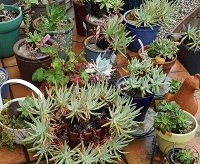 Growing and Appreciating California Succulents in Gardens and in the Wild, a talk by Paul Heiple
Growing and Appreciating California Succulents in Gardens and in the Wild, a talk by Paul Heiple
Wednesday, March 10, 2021, 7:30pm
This talk can be viewed on YouTube.
A few pieces of California native succulents from a CNPS wildflower show prompted geologist and restorationist Paul Heiple to add many California natives to his large collection of “foreign” succulents. Soon he was deep into dudleyas, sedums, lewisias, cacti and yuccas. Paul will share the excitement of finding these beautiful plants in the wild and he will explain how he grows them.
Paul Heiple is the Grassroots Ecology Botanist Emeritus. A retired petroleum geologist who spent his career exploring for oil in the Williston Basin of North Dakota, he now focuses on the smaller landscapes of Jasper Ridge and nearby Pearson-Arastradero Preserve and Edgewood Preserve. Paul has served as chair of the Conservation Committee of the Town of Portola Valley, co-chair of the San Mateo County Weed Management Area and as our Chapter’s Treasurer. He is active with the California Invasive Plant Council and mentors local Boy Scout troops. He also leads the long-running, effective weed warrior effort at Edgewood Park and Natural Preserve, a famous serpentine grassland reserve near Redwood City.
 Getting Started with Native Plants, a talk by Radhika Thekkath
Getting Started with Native Plants, a talk by Radhika Thekkath
Wednesday, March 3, 2021, 7:30pm
View this talk on YouTube.
Handouts: Plant List, Slides
Learn the advantages of incorporating even a few native plants into a Bay Area suburban garden. Whether the homeowner wants to put in three native plants in a small bed or convert the entire front yard, it is never easy to know where to start. This talk takes the fear out of this unfamiliar botanic world. With lots of photos and a list of just 22 plants of varying sizes, colors and shapes, the problem is made tractable. The chosen plants are easy to grow, maintain and water, and do well in the clay soil of our San Francisco Bay Area.
Radhika Thekkath is a retired computer scientist who has been gardening with native plants and has been an active member of our Chapter for over ten years. She recently returned to California after a three year stay in Washington state. Her more recent work includes active forestry management and stewardship as well as sustainable building with cob and straw bale. She is currently completing an in-depth course in permaculture design.
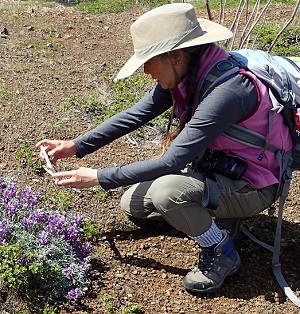 Taking Close Up Plant ID pictures with a Camera Phone, a talk by Dee Himes
Taking Close Up Plant ID pictures with a Camera Phone, a talk by Dee Himes
Wednesday, February 24, 2021 7:30pm
View this talk on YouTube.
Plant identification in the field can be challenging, and capturing clear pictures of the parts of a plant that you’ll need for later identification can be a frustrating exercise. Dee Himes will show you how to take quality close-ups with an iPhone and ōlloclip® lens adapter, and help understand what features of plants are needed to identify a plant from pictures. You’ll never have to return home and be disappointed that your pictures are missing features or are too fuzzy to use.Plant identification in the field can be challenging, and capturing clear pictures of the parts of a plant that you’ll need for later identification can be a frustrating exercise. Dee Himes will show you how to take quality close-ups with an iPhone and ōlloclip® lens adapter, and help understand what features of plants are needed to identify a plant from pictures. You’ll never have to return home and be disappointed that your pictures are missing features or are too fuzzy to use.
Dee has been a CNPS member since the early 2000s, and served as our Chapter treasurer (2012-2014) as well as field trip chair (2014-2016). She’s currently serving on both the state CNPS and our Chapter’s board of directors. Dee has a passion for horticulture and photography and combines this love by photographing plants in their natural environment.
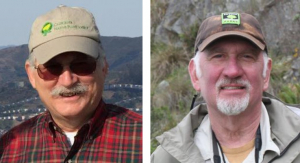 The Natural History of San Bruno Mountain, a talk by David Nelson and Doug Allshouse
The Natural History of San Bruno Mountain, a talk by David Nelson and Doug Allshouse
Wednesday, February 17, 2021 7:30pm
View this talk on YouTube.
San Bruno Mountain is possibly the best undiscovered natural area in the greater San Francisco Bay Area. Thirteen rare and endangered plants, including six endemics, call the mountain their home. Four federally threatened or endangered butterflies live and breed here, the only place on Earth where they all co-exist. All told, there are 42 species of butterflies, 200 species of birds, 16 mammals, 13 reptiles and 6 amphibians. The mountain is a mélange of plants, vertebrates, and invertebrates that celebrate the incredible diversity that once existed within our state; a diversity that is vanishing at an astonishing rate, but that is being fiercely protected by people who simply refuse to allow it to disappear on the mountain. This talk will show you some of the natural wonders of this State and County Park and federallyprotected nature reserve and biological hotspot.
David Nelson is an orthopedic hand surgeon who has long been a student of nature. He took a CNPS tour of San Bruno Mountain led by Doug Allshouse in 2013 and was hooked by the beauty of the mountain and Doug’s talent for explaining nature. When he proposed doing a book on the mountain to Doug, he discovered that Doug was already working on one and welcomed his participation. Doug Allshouse lives on San Bruno Mountain, 100 feet below the Saddle Trail, and has been exploring, studying, and recording their natural history since 1981. He was a founder and officer of Friends of San Bruno Mountain, beginning in 1996, as well as of the original Mission Blue Nursery in 2001. He has been working on a seven-year project with David Nelson writing an updated flora, The Natural History of the San Bruno Mountains.
 Gardening for Biodiversity with Native Plants, a talk by Shelkie Tao
Gardening for Biodiversity with Native Plants, a talk by Shelkie Tao
Wednesday, February 3, 2021 7:30pm
View this talk on YouTube.
Native gardens provide so many benefits. They are beautiful, low water, low maintenance and support a wide variety of wildlife. A major advantage of native gardens is that they can be a great place to help us preserve biodiversity.
California is a hotspot of biodiversity: it “is home to more species of plants and animals than any other state, and is home to about one third of all species found in the United States, including more rare plants than most states have plants.” However, “More than 30% of California’s species are threatened with extinction.”
The good news is that our gardens can help restore and preserve biodiversity. By planting a wide variety of native plants, including those that are facing extinction, native plant gardens can support plant biodiversity while supporting a large number of insects, pollinators and other forms of wildlife. In this meeting, Shelkie will talk about the biodiversity benefits of native plants, and go through some of the plants she uses in the gardens she designed.
Shelkie Tao is landscape designer and founder of WaterEfficientGardens.com, an online landscape design business that excels in low water and native plant garden designs. She is a sustainability-driven entrepreneur committed to developing water-saving and ecosystem-friendly solutions. Prior to Water Efficient Gardens, Shelkie worked over 10 years in the high tech industry in Silicon Valley. She received her Certificate of Achievement in Environmental Horticulture and Design from Foothill College, and MBA from the Anderson School at UCLA.
 Maintaining Your Native Plant Garden, a panel talk
Maintaining Your Native Plant Garden, a panel talk
Wednesday, January 27, 2021
Watch on YouTube
Winter is a time of renewal for native plant gardens. As we hope for winter rain, we are also on the alert for the weeds they bring while taking advantage of the cooler temperatures and moisture to plant, prune, and take care of other important gardening tasks. Stephanie Morris, Lior Dahan, Patricia Evans and Madeline Morrow will share their winter garden maintenance routines. Bring your questions and any ideas you may want to share with others during a group discussion, and get your garden ready for spring!
Stephanie Morris is a landscape architect focused on creating designs that respond to ecology, aesthetics, and functionality with emphasis on native plants, healthy soil, water-conservation, and environmentally-conscious materials.. Lior Dahan has a degree in environmental horticulture and owns Rhythmic Gardening, an ecological garden maintenance company with a focus on working with nature to heal soil, grow healthy plants, and appreciate the wildlife in our gardens. Patricia Evans, owner of Natural Landscape Design, specializes in native plants and sustainable landscaping. Madeline Morrow is a past President of our CNPS Chapter and current board member. Her garden was featured in Bay Nature magazine in March 2013 and has been on the Going Native Garden Tour for many years.

The Amazing Manzanita and All Her Relations, Kate Marianchild
Wednesday, January 13, 2021
Watch on YouTube
Manzanita! The word conjures visions of curvy reddish limbs reaching upward and outward into the sky, a feast for the fingers as well as the eyes. But there is much more to this plant than its striking beauty, including its talent for thriving in tough conditions. Have you ever wondered how 193 species and subspecies have managed to emerge since manzanita first appeared on the central California coast 37 million years ago?
In January, when manzanitas of all shapes and sizes will be glowing with small white or pink flowers, author and naturalist Kate Marianchild will explain some of manzanita’s “mojo” ––its profound partnerships with fungi and bumblebees; its super-thin skin that both helps and hinders it; and its waxy leaves that follow the sun from dawn to dusk. She’ll tell stories about pollination in middle C; unscrupulous “nectar thieves,” and bark that peels around summer solstice. She’ll also emphasize manzanita’s vital role in the lives of animals––from ants and silk moths to birds and bears.
Kate Marianchild is the author of Secrets of the Oak Woodlands: Plants and Animals among California’s Oaks (Heyday, 2014). This award-winning bestseller is an engaging and beautifully illustrated romp through California’s most widespread habitat. With humor, affection, and scientific accuracy, Marianchild profiles the behaviors, social structures, anatomical marvels, and co-evolutionary relationships of twenty-two plants and animals found in California’s oak woodlands.
Marianchild lives in a yurt near Ukiah surrounded by acorn woodpeckers, woodrats, newts, and five kinds of oaks. When she is not giving talks, guiding walks, or observing nature, she swims, sings, and advocates for the preservation of native plants and the food webs that depend on them. More information, as well as the opportunity to purchase signed copies of her book, close-focus binoculars, and oak identification guides, at katemarianchild.com.
Archives
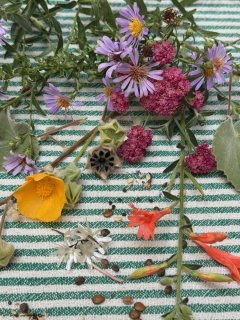
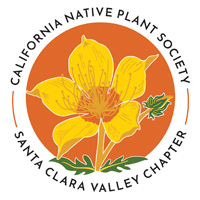

 The CNPS SCV Native Plant Lecture Series was started during the pandemic in 2020. Talks in the series cover a wide range of native plant related topics -- conservation, rare plants, gardening, plant science, tours of botanical hot spots, and more. The talks were live presentations followed by Q&As with the viewing audience.
The CNPS SCV Native Plant Lecture Series was started during the pandemic in 2020. Talks in the series cover a wide range of native plant related topics -- conservation, rare plants, gardening, plant science, tours of botanical hot spots, and more. The talks were live presentations followed by Q&As with the viewing audience.  Project 467: Enhancing Native Plant Diversity at Edgewood, Stuart B. Weiss Ph.D.
Project 467: Enhancing Native Plant Diversity at Edgewood, Stuart B. Weiss Ph.D. Native Plants for Year-Round Color, a talk by Madeline Morrow
Native Plants for Year-Round Color, a talk by Madeline Morrow Nature’s Best Hope, A talk by Doug Tallamy
Nature’s Best Hope, A talk by Doug Tallamy Wildlife of the Bay Area, a talk by Ameet Zaveri
Wildlife of the Bay Area, a talk by Ameet Zaveri CNPS Vegetation Program: Fine-scale inventory and mapping, a talk by Julie Evens
CNPS Vegetation Program: Fine-scale inventory and mapping, a talk by Julie Evens Planting Demo, Nursery Tour and QA session
Planting Demo, Nursery Tour and QA session CNPS Explorers: A Botanical Quest in Asia & Europe, by Ken and Dee Himes
CNPS Explorers: A Botanical Quest in Asia & Europe, by Ken and Dee Himes Plant ID for the Curious, a talk by Bruce Homer-Smith
Plant ID for the Curious, a talk by Bruce Homer-Smith Death Valley ̶ Botanizing High and Low, a talk by Matt Berger
Death Valley ̶ Botanizing High and Low, a talk by Matt Berger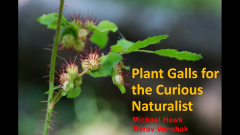
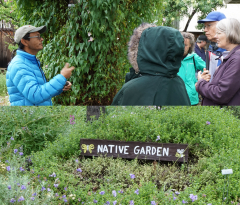
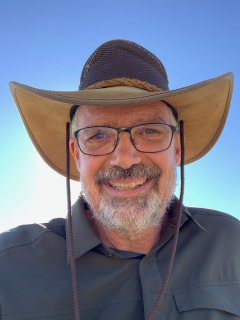 California Native Trees: Climate Change and Adaptation, a talk by Dave Muffly
California Native Trees: Climate Change and Adaptation, a talk by Dave Muffly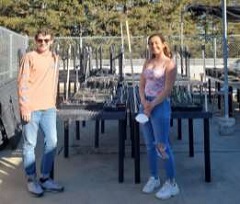
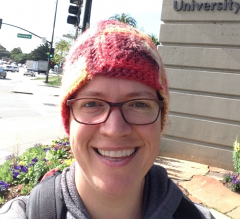 California Ethnobotany for Learners of All Ages, a talk by Jane Rieder
California Ethnobotany for Learners of All Ages, a talk by Jane Rieder
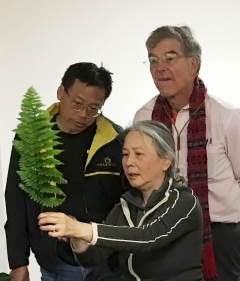
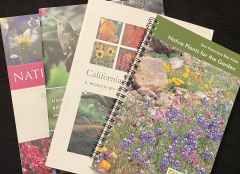
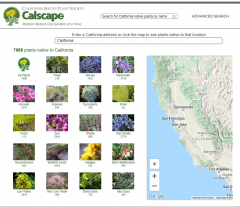

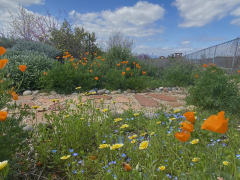







 How to Attract Wild Birds to your Garden a talk by Lisa Myers
How to Attract Wild Birds to your Garden a talk by Lisa Myers Climate Change: What Works and What You Can Do, a talk by Elaine Salinger
Climate Change: What Works and What You Can Do, a talk by Elaine Salinger Paintbrushes in Peril: Rare Castilleja Species of North America, a talk by Mark Egger
Paintbrushes in Peril: Rare Castilleja Species of North America, a talk by Mark Egger Gardening for Butterflies and Caterpillars, a talk by Susan Karasoff
Gardening for Butterflies and Caterpillars, a talk by Susan Karasoff Container Gardening with Native Plants, a talk by Pete Veilleux
Container Gardening with Native Plants, a talk by Pete Veilleux Conservation of a Rare Redwood Forest Endemic, Dudley's Lousewort, a talk by Ben Carter
Conservation of a Rare Redwood Forest Endemic, Dudley's Lousewort, a talk by Ben Carter Protecting San Francisco Bay from Invasive Spartina, a talk by Jeanne Hammond and Lindsay Faye Domecus
Protecting San Francisco Bay from Invasive Spartina, a talk by Jeanne Hammond and Lindsay Faye Domecus California Native Gardening—Month by Month, a talk by Helen Popper
California Native Gardening—Month by Month, a talk by Helen Popper Converting Your Lawn with Sheet Mulching, a talk by Radhika Thekkath
Converting Your Lawn with Sheet Mulching, a talk by Radhika Thekkath Bay Area Rare Plants – A nine-county photo tour, a talk by David Greenberger
Bay Area Rare Plants – A nine-county photo tour, a talk by David Greenberger Rosewood Medicinal Native Garden, a talk by Radhika Thekkath
Rosewood Medicinal Native Garden, a talk by Radhika Thekkath Fire Resilient Landscaping with Native Plants, a talk by Nikki Hanson
Fire Resilient Landscaping with Native Plants, a talk by Nikki Hanson Wildflowers of the Bay Area, a talk by Andrea Williams
Wildflowers of the Bay Area, a talk by Andrea Williams From Trails to Gardens: Celebrating Local Native Plants, a talk by Stephanie Morris
From Trails to Gardens: Celebrating Local Native Plants, a talk by Stephanie Morris The Penney Garden: A Transformation Story, a talk by Janine Penney
The Penney Garden: A Transformation Story, a talk by Janine Penney Flora of the San Joaquin Desert, a talk by Ryan O’Dell
Flora of the San Joaquin Desert, a talk by Ryan O’Dell Gardening for Native Bees, a talk by John Kehoe
Gardening for Native Bees, a talk by John Kehoe Native Plant Pollinators, a talk by Juanita Salisbury
Native Plant Pollinators, a talk by Juanita Salisbury Meadowlands Garden Tour, a talk by Krzysztof Kozminski
Meadowlands Garden Tour, a talk by Krzysztof Kozminski Saving Wildflowers: How to be a More Effective Rare Plant Advocate, a talk by Dr. Tim Krantz
Saving Wildflowers: How to be a More Effective Rare Plant Advocate, a talk by Dr. Tim Krantz Growing and Appreciating California Succulents in Gardens and in the Wild, a talk by Paul Heiple
Growing and Appreciating California Succulents in Gardens and in the Wild, a talk by Paul Heiple  Taking Close Up Plant ID pictures with a Camera Phone, a talk by Dee Himes
Taking Close Up Plant ID pictures with a Camera Phone, a talk by Dee Himes The Natural History of San Bruno Mountain, a talk by David Nelson and Doug Allshouse
The Natural History of San Bruno Mountain, a talk by David Nelson and Doug Allshouse Gardening for Biodiversity with Native Plants, a talk by Shelkie Tao
Gardening for Biodiversity with Native Plants, a talk by Shelkie Tao
